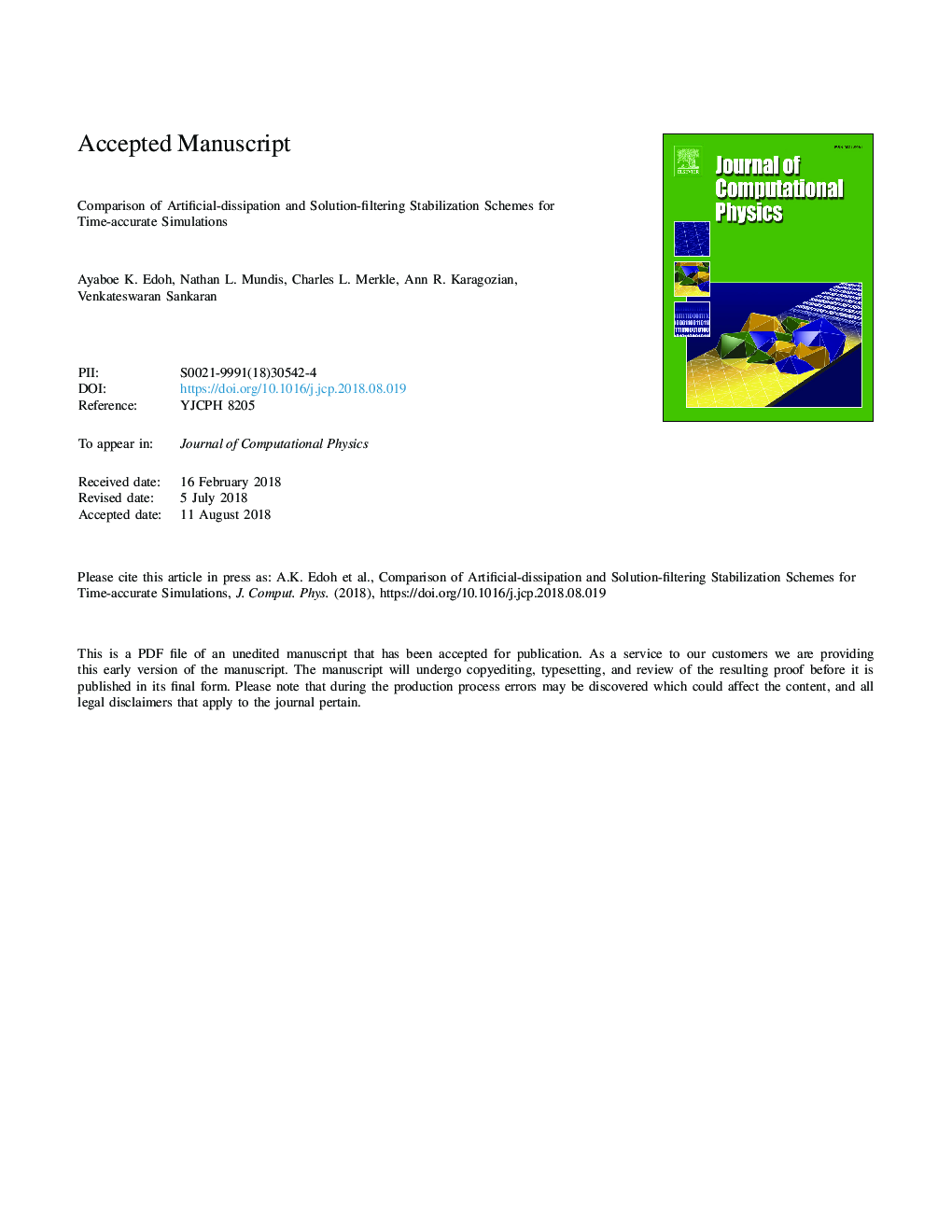| Article ID | Journal | Published Year | Pages | File Type |
|---|---|---|---|---|
| 11031570 | Journal of Computational Physics | 2018 | 32 Pages |
Abstract
The current study investigates the use of solution filtering and artificial dissipation as stabilization methods for time-accurate computations, notably focusing on how the decoupling of dissipation from integration impacts simulation error. Rewriting solution filtering in an effective artificial-dissipation form explicitly reveals the issue of temporal inconsistency, which is addressed by a proposed CFL re-scaling. In addition, expressing symmetric discrete filters as difference operators inspires the derivation of a “filter-based” artificial-dissipation formulation that provides the opportunity for direct spectral manipulation by utilizing known filter stencil specifications; this furthermore facilitates the creation of Padé-type artificial dissipation terms with spectrally tunable and scale-discriminant properties. Damping characteristics of the schemes are assessed through von Neumann analysis and are confirmed via simulations of the one-dimensional advection equation (wave-packet transport) as well as the three-dimensional compressible Navier-Stokes system (Taylor-Green vortex), where the impact of time step size on accuracy of the respective stabilization techniques is inspected.
Related Topics
Physical Sciences and Engineering
Computer Science
Computer Science Applications
Authors
Ayaboe K. Edoh, Nathan L. Mundis, Charles L. Merkle, Ann R. Karagozian, Venkateswaran Sankaran,
